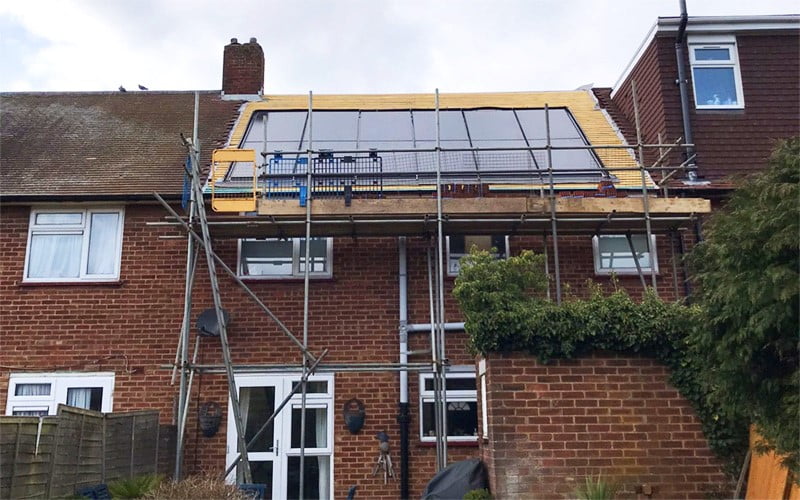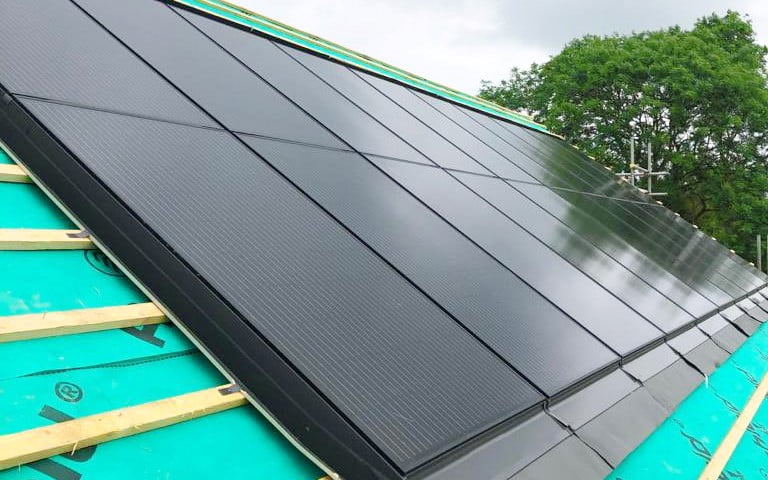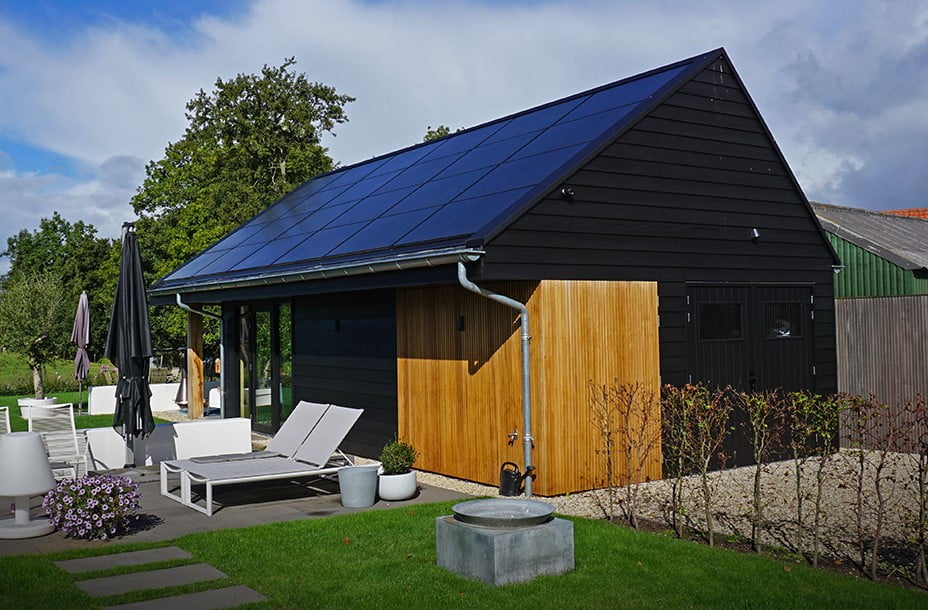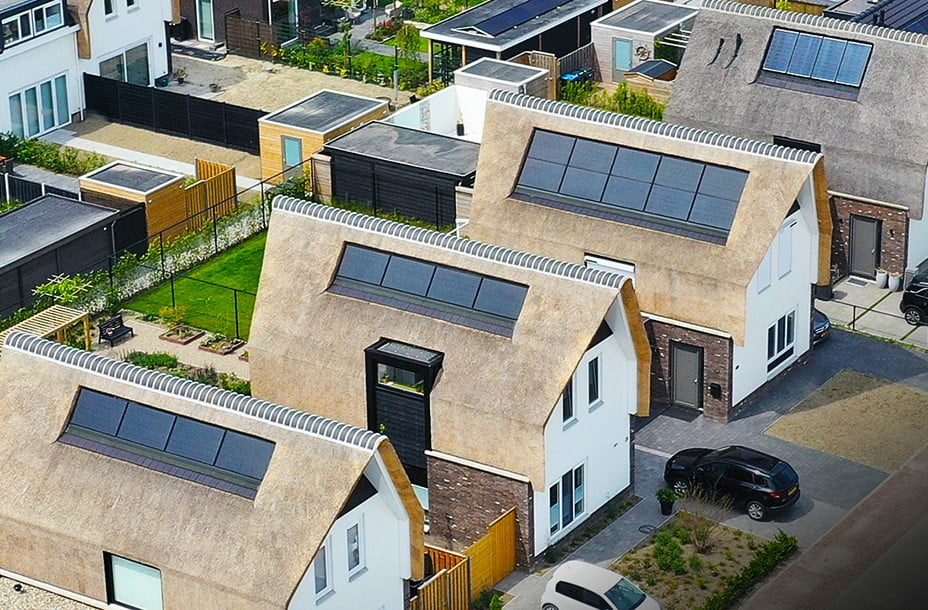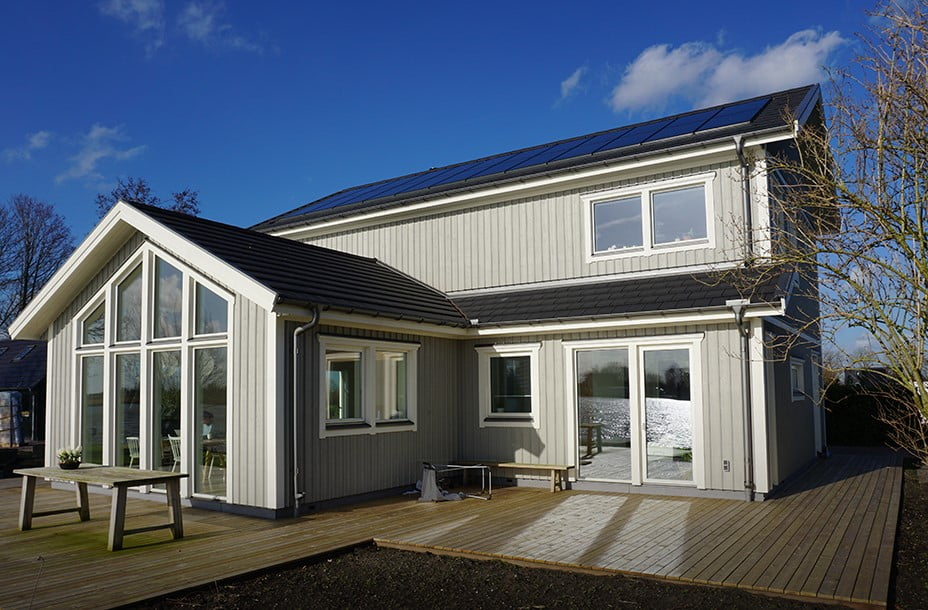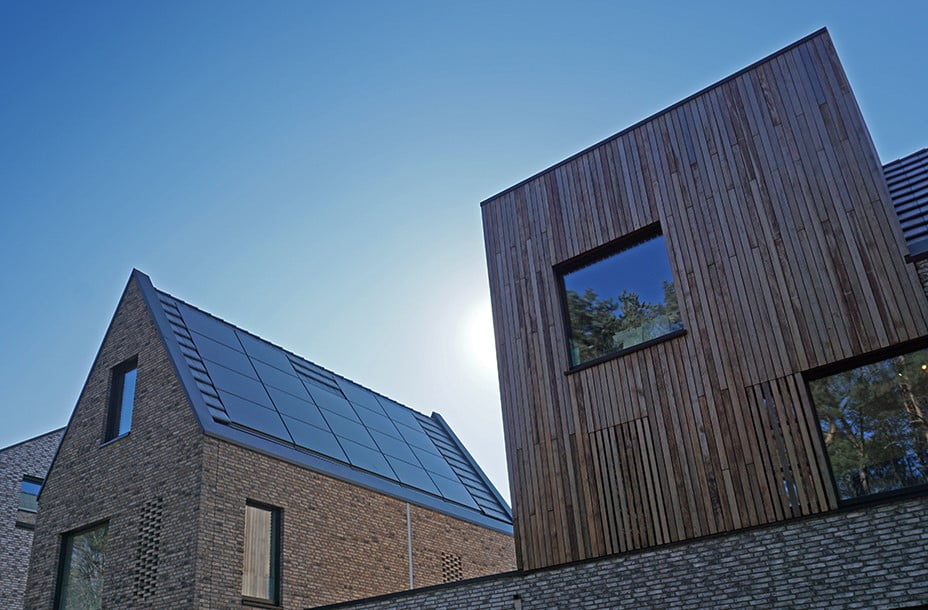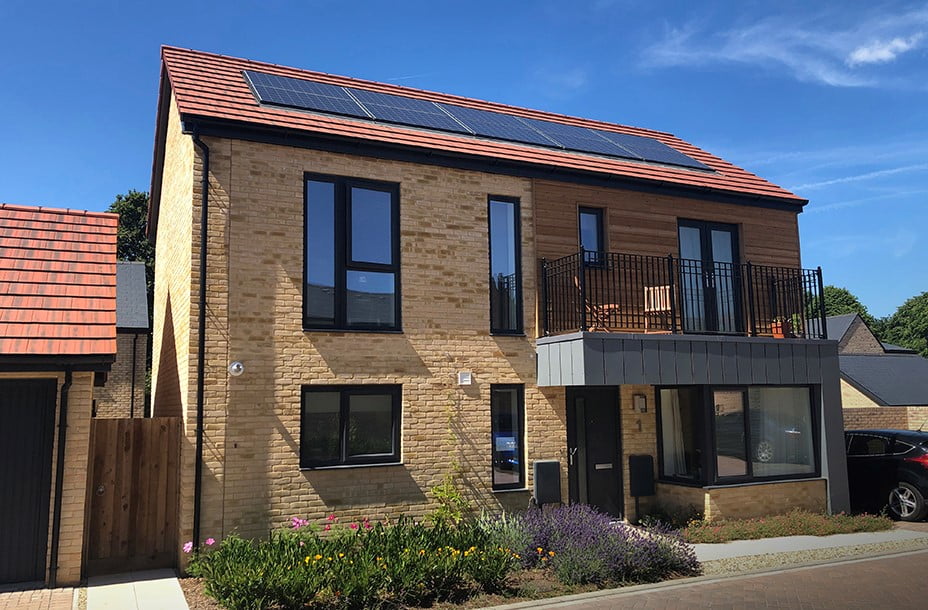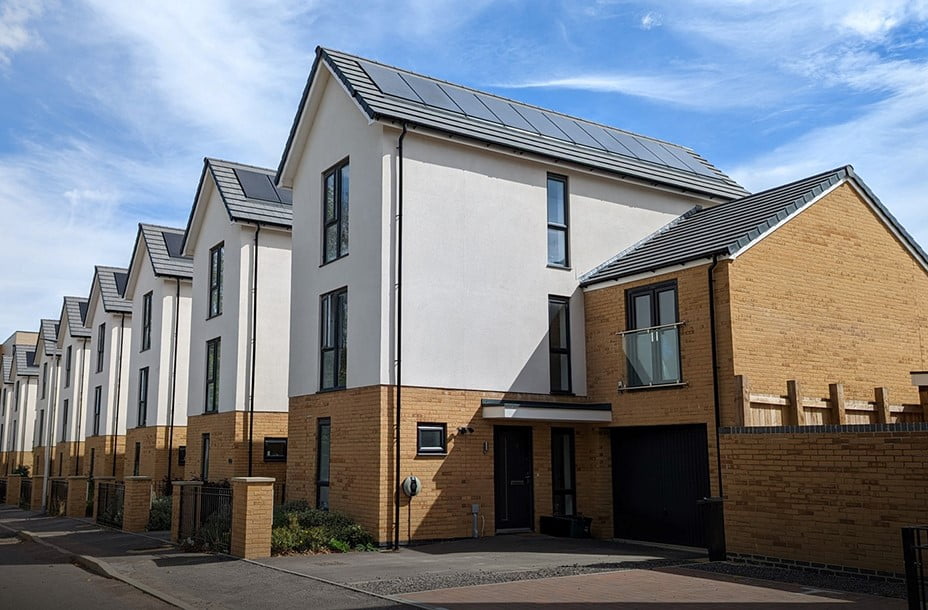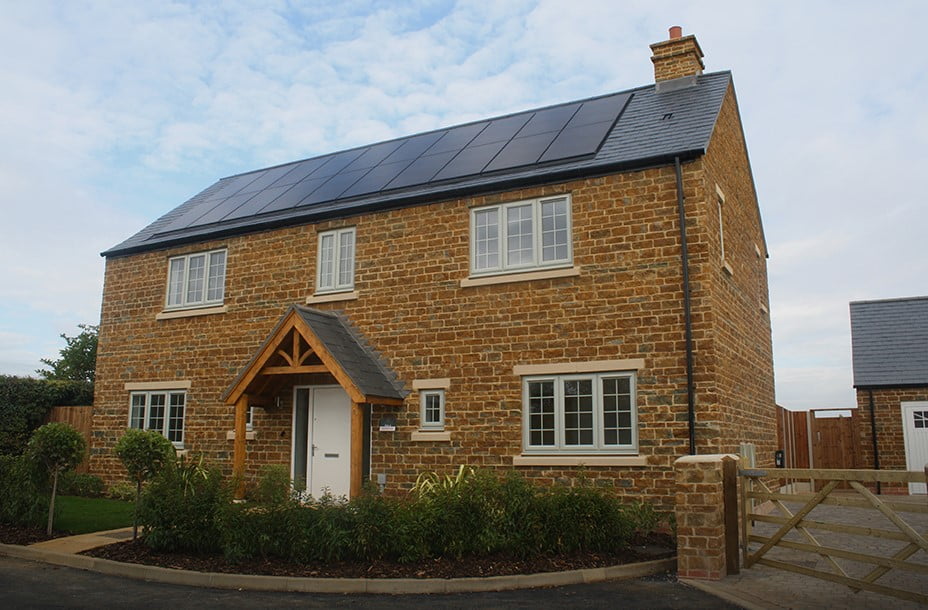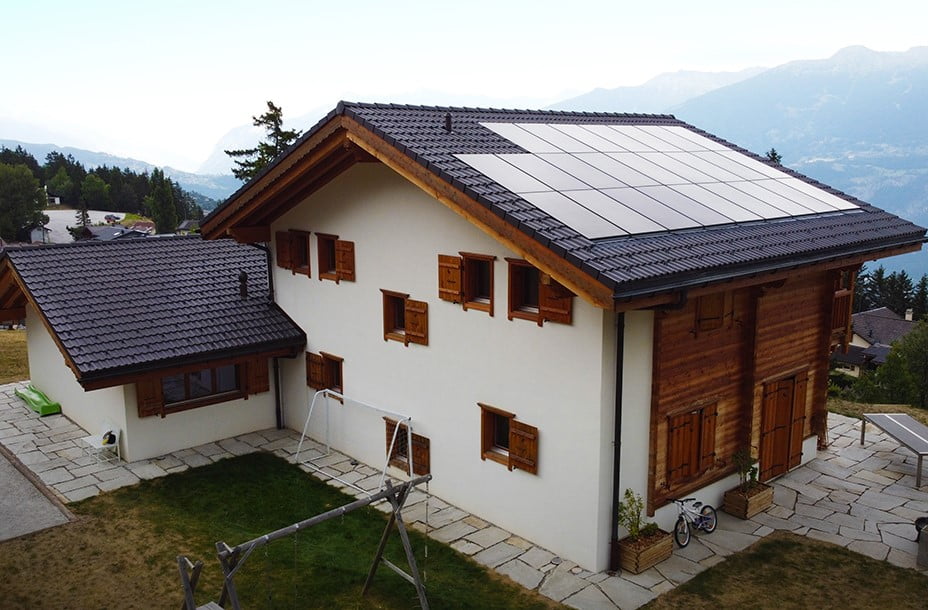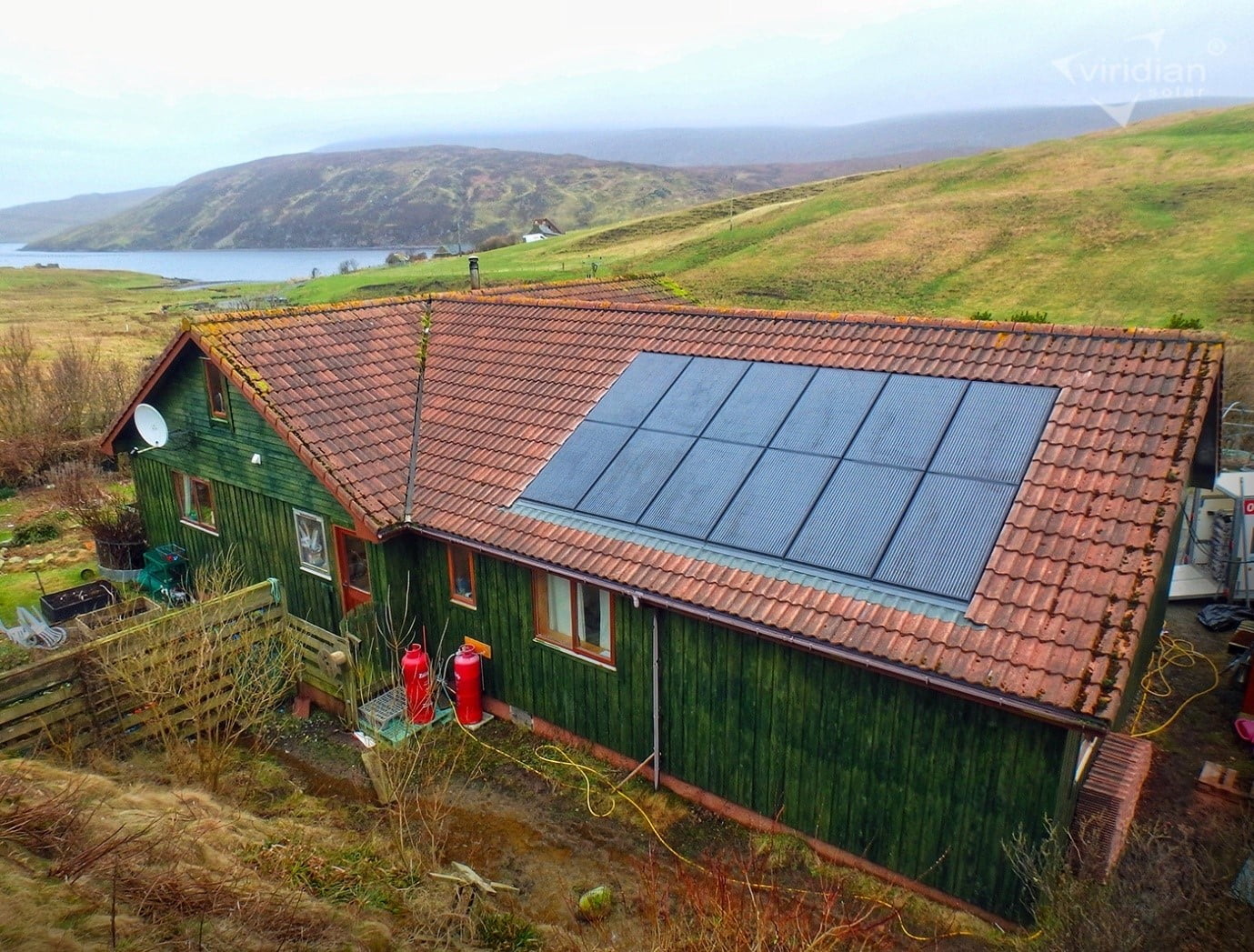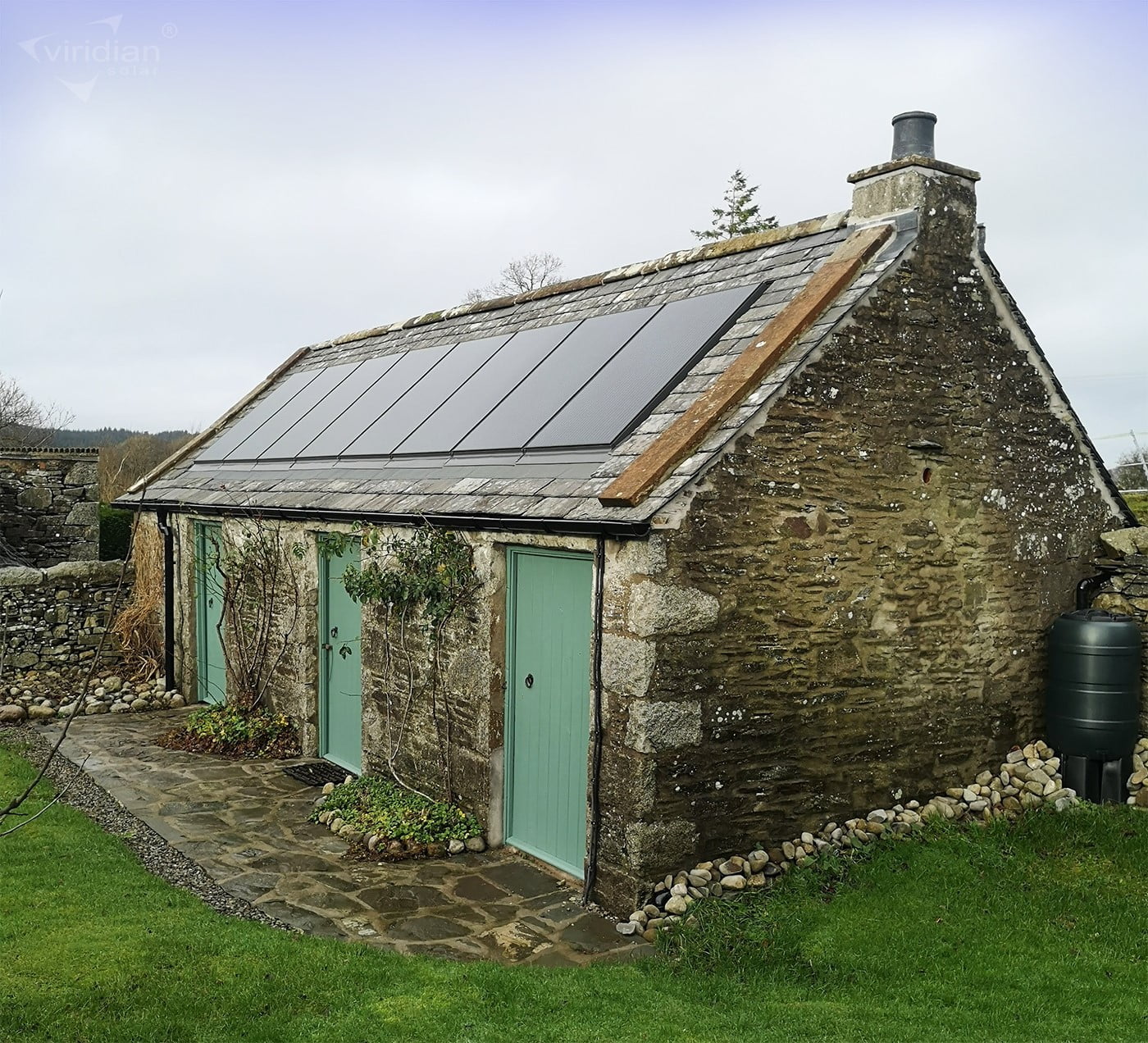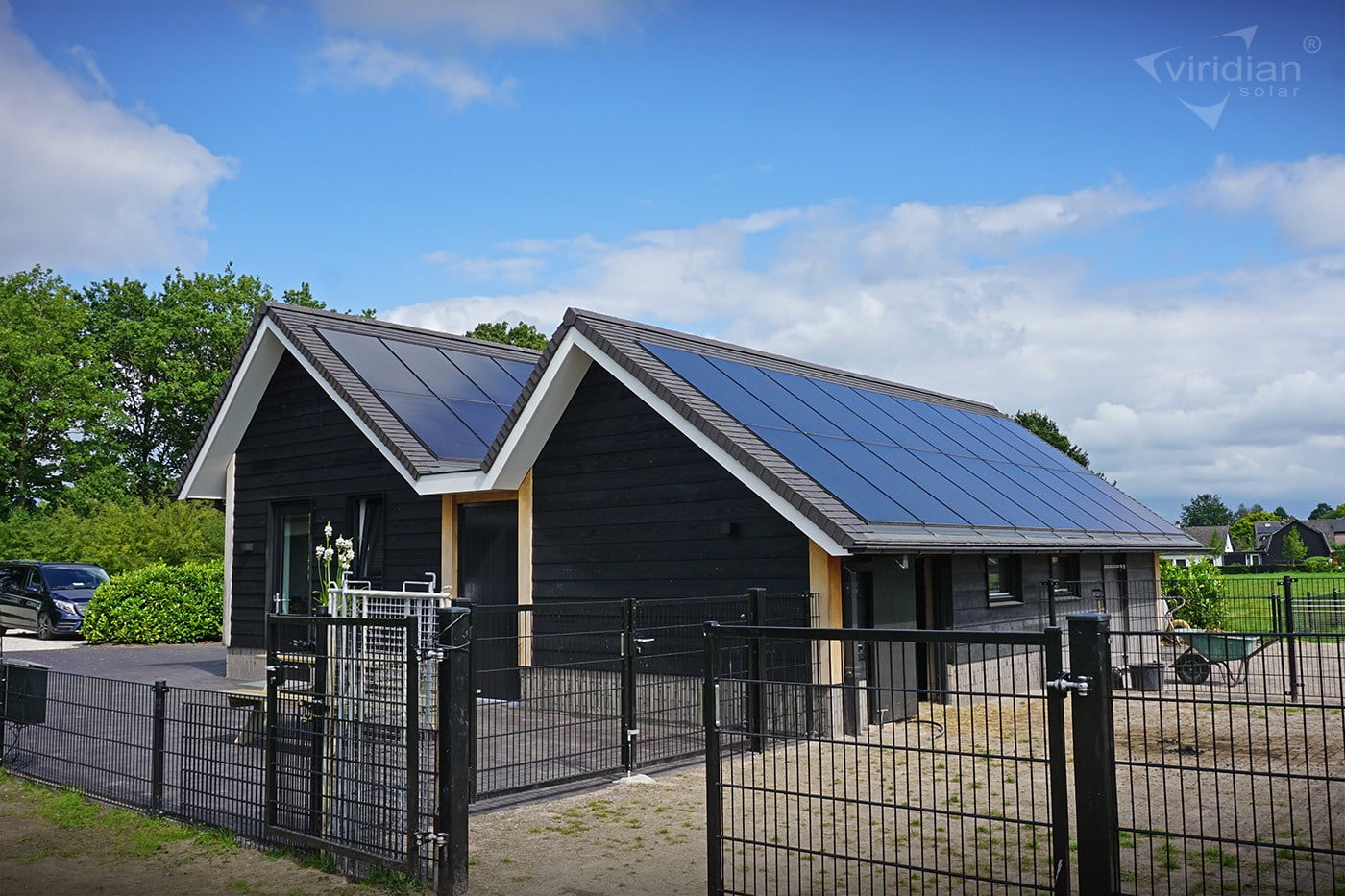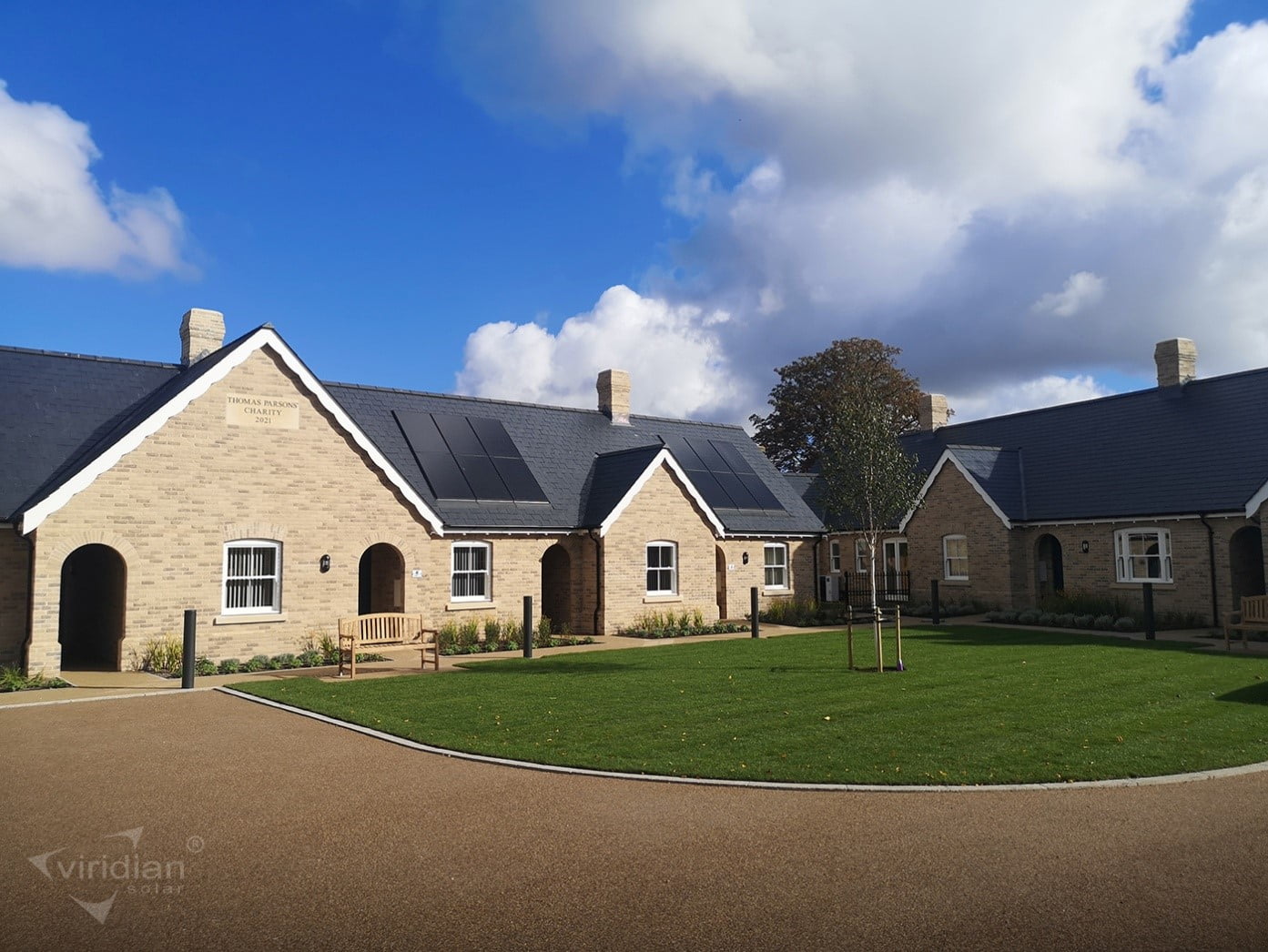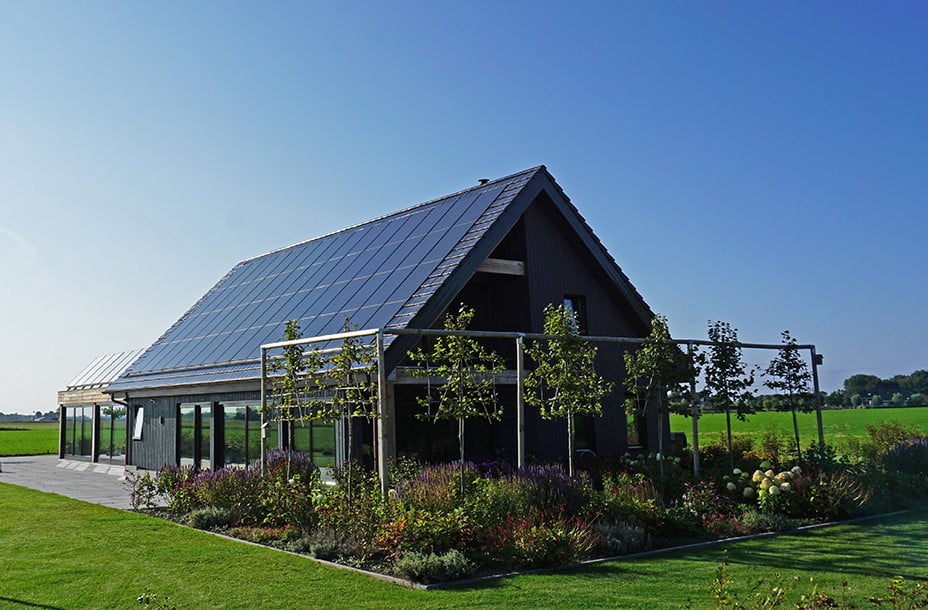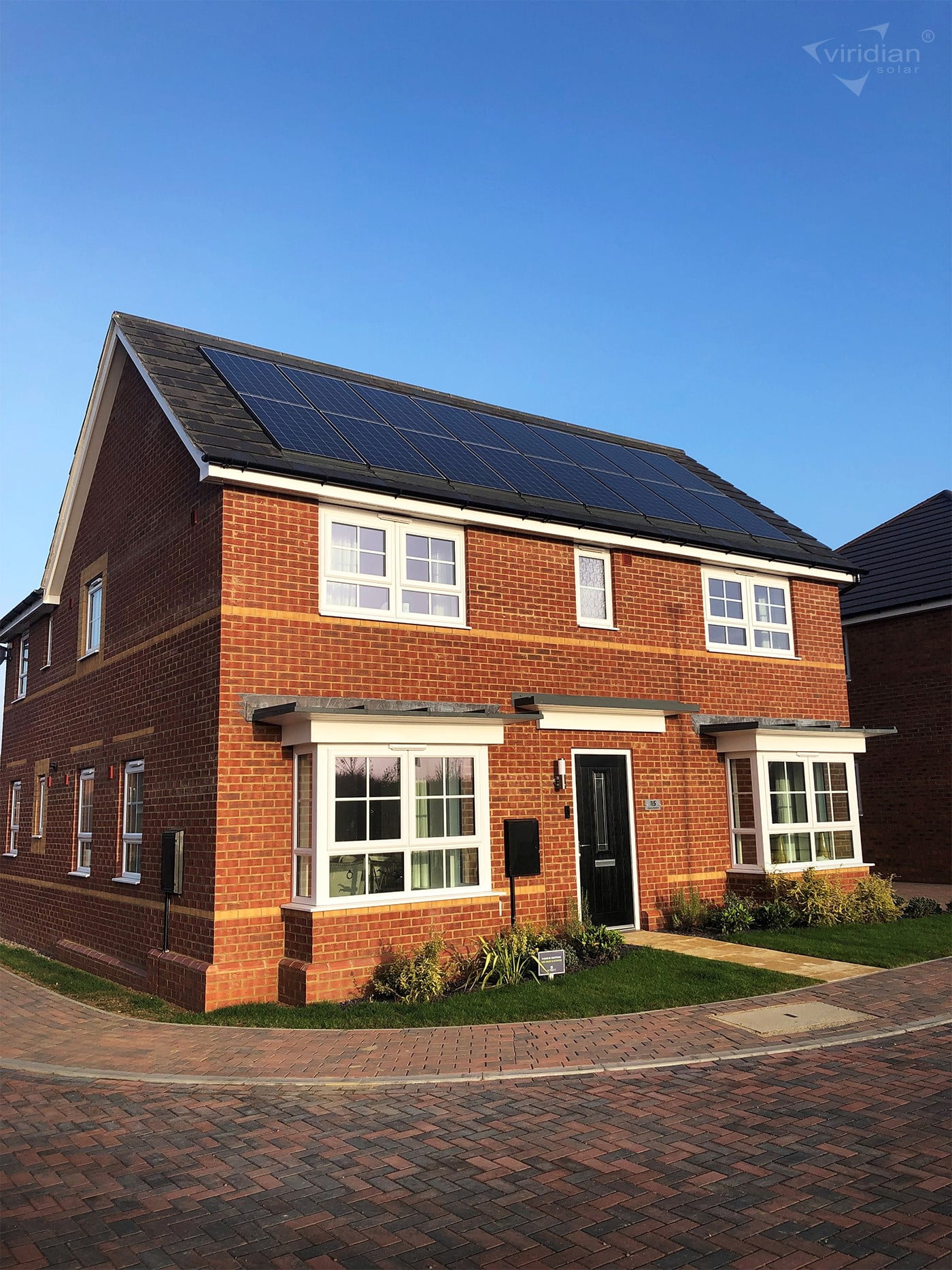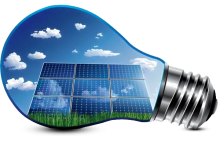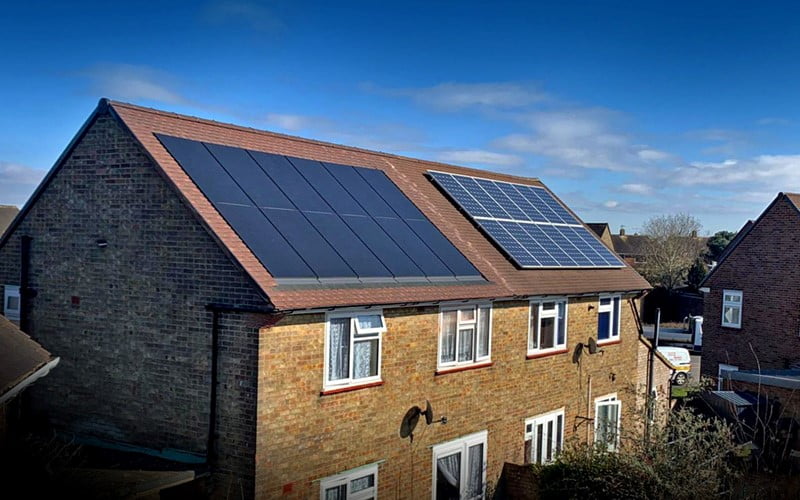
Where PV works the Best?
Solar PV systems only need daylight, so can work in most locations. However, the output changes based upon the amount of daylight available. They will always be most efficient when placed in un-shaded areas, facing at least partly South-facing. Any direction in the southerly arc between East and West will work at no less than 85% efficiency though. Output depends wholly on the strength of the sunlight, not on the outside air temperature.
No planning permission is needed for most home solar electricity systems, as long as they’re below a certain size. You should check though if your home is a listed building, in a conservation area or World Heritage site.
The inverter is usually mounted on a wall inside your property, near the solar panels, or the household consumer unit. It will usually include a meter to show how the system is performing.
Solar photovoltaic cells convert sunlight into electricity, which can be used to run the appliances in your home or business. They only need daylight and still generate electricity on cloudy days.
Known commonly as solar panels, or just PV in the industry, they are the large, flat panels that go on roofs to convert sunlight into electricity. PV cells come in a variety of shapes and colours, from roof and wall mounting panels to grey “solar tiles” that look like roof tiles. There are even panels available with the solar cells spaced apart to allow some sunshine through for conservatory roofing, for example.
The technology behind them is improving rapidly making them more efficient at generating electricity regardless of the weather. They are also covered by ‘permitted development’, which means you can install them without having to seek planning permission. (exceptions apply – such as installation on listed buildings).
“We now aim to combine the installation of solar with our general maintenance programme. In this project the homes were scheduled for re-roofing, so we were able to complete the installation of solar PV, battery storage and insulation improvements all at the same time as renewing the roof covering. We benefit from efficiency gains and cost savings from doing this work all together.”
How to Harness Solar Power
In one technique, long troughs of U-shaped mirrors focus sunlight on a pipe of oil that runs through the middle. The hot oil then boils water for electricity generation. Another technique uses moveable mirrors to focus the sun’s rays on a collector tower, where a receiver sits. Molten salt flowing through the receiver is heated to run a generator.
Other solar technologies are passive. For example, big windows placed on the sunny side of a building allow sunlight to heat-absorbent materials on the floor and walls. These surfaces then release the heat at night to keep the building warm. Similarly, absorbent plates on a roof can heat liquid in tubes that supply a house with hot water.
Solar energy is lauded as an inexhaustible fuel source that is pollution- and often noise-free. The technology is also versatile. For example, solar cells generate energy for far-out places like satellites in Earth orbit and cabins deep in the Rocky Mountains as easily as they can power downtown buildings and futuristic cars.
“We’ve been installing between 8 and 20 Clearline fusion panels per house, depending on available roof space, and combining this with a hybrid inverter and battery storage up to 8.2kWh. The council’s previous experience was of solar systems that fitted above the roof, but it now prefers to install roof-integrated solar to avoid pigeon nuisance and potential maintenance issues such as roof leaks. “
Furthermore, the installation of solar panels on rooftops and other areas provides numerous benefits to communities. It helps reduce electricity bills, creates jobs in the renewable energy industry and contributes to a healthier environment by cutting down levels of air pollution.
Solar energy is quickly becoming one of the most popular sources of renewable energy around the world, with countries like Japan, China and the United States leading the way in solar energy production. With more people realizing the potential of solar energy and its ability to reduce greenhouse gas emissions, it is likely that this trend will only continue into the future.
The environmental benefits of solar energy are undeniable, and as more advances are made in technology, solar energy will become an even more viable option for providing clean, renewable energy to people all across the world.
With so many advantages associated with solar power, it is clear that this form of energy production is here to stay. But a lack of greenhouse emissions isn’t the only environmental effect associated with solar power.
Solar Panels Reduce Air Pollution
Air pollution is a serious problem that affects the health of people and other living things. However, solar panels can help reduce air pollution significantly by converting sunlight into electricity, which is then used to power homes, businesses and other structures.
This means that instead of relying on fossil fuels such as coal or natural gas for energy, solar panels are an efficient and clean alternative.
Using solar panels can reduce carbon dioxide and other greenhouse gases that are released into the atmosphere due to the burning of fossil fuels.
What’s more, solar energy is renewable, meaning it will never run out, while fossil fuels are finite resources that will eventually be depleted.
By harnessing the power of the sun, solar panels can help to reduce air pollution and protect the environment for future generations. Add in the fact that solar panels are cheaper to install and maintain than traditional energy sources in the long run, and they’re an increasingly attractive option for many homeowners and business
Solar Panels Help Preserve Natural Resources
It’s no secret that natural resources are increasingly under pressure from human activities, with many species facing extinction and habitats being destroyed.
Solar panels can help reduce the impact of these activities by providing clean, renewable energy that does not require natural resources to produce. By relying on solar power instead of burning fossil fuels like coal and oil, solar panel users can significantly reduce their carbon footprints while simultaneously preserving the earth’s dwindling natural resources.
Additionally, solar panels can be used to produce electricity in remote areas where fossil fuel infrastructure is not available, further reducing reliance on finite resources like coal and oil.
Solar energy also helps conserve water by eliminating the need for cooling systems that are required with traditional electricity generation methods.
So by installing solar panels, you can be part of the solution to preserving our planet’s precious natural resources and reducing your environmental footprint.
Solar power is not only a way to preserve natural resources, but it also has the potential to create jobs within the renewable energy industry.
Investing in solar power will help create more sustainable communities and contribute to a brighter future for generations to come. Thanks to your efforts, you will help protect our planet’s most precious resources while also creating jobs and providing clean energy for years to come.
More to the Story?
The benefits that solar energy provides are undeniable. From reducing reliance on fossil fuels to improving air quality, the environmental advantages of solar energy make it a serious contender in the race for sustainable energy sources. However, there are still some drawbacks that need to be addressed before it can become a mainstream energy source.
One of the major environmental issues with solar panels is their production process. Solar cells and other components require large amounts of energy and water during the manufacturing process, making them resource-intensive compared to other energy sources.
Additionally, solar cells contain hazardous materials like lead and arsenic that must be disposed of properly when the panels are no longer in use. As such, it’s important to research the production process of any solar panel company before investing in its products.
Another potential environmental issue is solar panel waste. Solar cells can last anywhere from 15 to 30 years, but as technology continues to improve, solar panels become obsolete more quickly. This creates a cycle of production and disposal that could lead to large amounts of waste if not managed properly.
Finally, there is the issue of land use. Solar farms take up a lot of space and can have an impact on wildlife habitats. The best way to reduce these effects is to use rooftop solar installations, which don’t take up any additional land or find ways to incorporate solar farms into existing agricultural lands.
These potential environmental drawbacks of solar panels must be addressed in order for them to be truly sustainable energy sources. With careful consideration and proper implementation, however, the benefits of solar energy far outweigh the risks.
Solar energy is a viable and important part of the transition to renewable sources and can help create a more sustainable future for generations to come.
The use of solar panels to power the homes and offices of everyday people is an invaluable asset for those looking to reduce their impact on the environment.
Not only do solar panels decrease the negative environmental effects caused by burning fossil fuels, but they offer a reliable source of renewable energy that can be used to power practically any device or appliance.
Solar panels can be used to power household appliances, heat and cool homes and even charge electric cars. With the right setup and maintenance, solar panels can provide energy for many years to come with minimal environmental damage.
It is clear that investing in solar panels could be an effective way of reducing one’s carbon footprint while still being able to take advantage of modern energy sources. By investing in renewable and clean sources of energy, we can help preserve the planet for generations to come.
It is important that everyone considers their personal impact on the environment when making decisions about electricity use, and solar panels are a great way to reduce one’s environmental footprint without sacrificing modern amenities.
